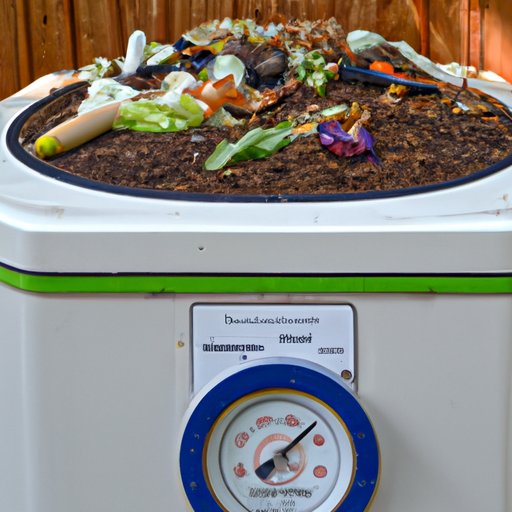Introduction
Composting is a simple and effective way to reduce your waste while creating nutrient-rich soil and fertilizer for your plants. It is an ecologically friendly practice that can help you save money and reduce your carbon footprint. Composting requires very little effort and can be done in any size space – from a large garden to a small balcony.
Composting is the process of breaking down organic matter such as leaves, grass clippings, food scraps, and other materials into nutrient-rich soil. This soil can then be used to fertilize plants and gardens, or even to improve the quality of your lawn.

Research Types of Composting Bins and Select the Best One
When selecting a compost bin, there are several factors to consider. The size of the bin should depend on the amount of waste you generate, as well as the available space you have to store the bin. You will also need to decide if you want a stationary bin or one that can be moved around. Finally, you will need to determine what type of material you would like the bin to be made of.
There are many different types of compost bins available, including plastic, metal, and wood. Plastic bins are usually the most affordable option, but they can also be more difficult to maintain since they require regular cleaning. Metal bins are more durable, but may be more expensive. Wood bins are the most aesthetically pleasing, but require more maintenance due to their tendency to rot over time.
Gather Materials to Fill Your Bin
Once you’ve selected your bin, it’s time to gather materials to fill it. You will need a mix of green and brown materials, which provide the necessary nutrients for the composting process. Green materials are high in nitrogen and include grass clippings, vegetable scraps, and fruit peels. Brown materials are high in carbon and include dead leaves, twigs, and straw.
You will also need soil to add to your compost bin. Soil helps to aerate the compost and provides essential nutrients. Additionally, you can add natural sources of nitrogen, such as coffee grounds and eggshells, to speed up the composting process.
Prepare the Bin
Now that you have gathered all of the necessary materials, you are ready to prepare your bin. Begin by adding layers of soil and organic materials to the bin. Alternate between green and brown materials, and make sure to break up any large clumps. This will help to ensure that air can circulate throughout the bin.
Next, you will need to add a source of nitrogen. This could be anything from grass clippings to food scraps. Be sure to mix the nitrogen source into the compost to ensure that it is evenly distributed.

Monitor Temperature and Moisture Levels
In order to ensure that your compost is breaking down properly, you will need to monitor the temperature and moisture levels. An easy way to do this is to use a thermometer to measure the temperature inside the bin. The ideal temperature range for composting is between 130 and 160 degrees Fahrenheit.
You will also need to check the moisture levels of the compost. If the compost is too dry, add a little water to moisten it. If it is too wet, add some dry materials such as leaves or straw to absorb the excess moisture.
Turn Compost Regularly
It is important to turn the compost regularly in order to aerate the contents and ensure that everything is breaking down evenly. Turning the compost also helps to keep the temperature and moisture levels consistent. You can use a shovel or pitchfork to turn the compost, or you can purchase a compost tumbler to make the process easier.
When turning the compost, make sure to mix the contents thoroughly and remove any large chunks or clumps. This will help to ensure that the compost breaks down efficiently and evenly.
Harvest Compost When Ready
When the compost has broken down completely, it is ready to be harvested. You will know that the compost is ready when it looks dark and crumbly and has an earthy smell. The compost should not have any large chunks or clumps left in it.
Once the compost is ready, you can use it to fertilize your plants or spread it on your lawn. Compost is also a great addition to gardens and flower beds, as it helps to retain moisture and provides essential nutrients for plant growth.
Conclusion
Composting is an easy and efficient way to reduce your waste while creating nutrient-rich soil for plants. By following the steps outlined above, you can easily create your own compost bin and start reaping the benefits of composting.
(Note: Is this article not meeting your expectations? Do you have knowledge or insights to share? Unlock new opportunities and expand your reach by joining our authors team. Click Registration to join us and share your expertise with our readers.)
